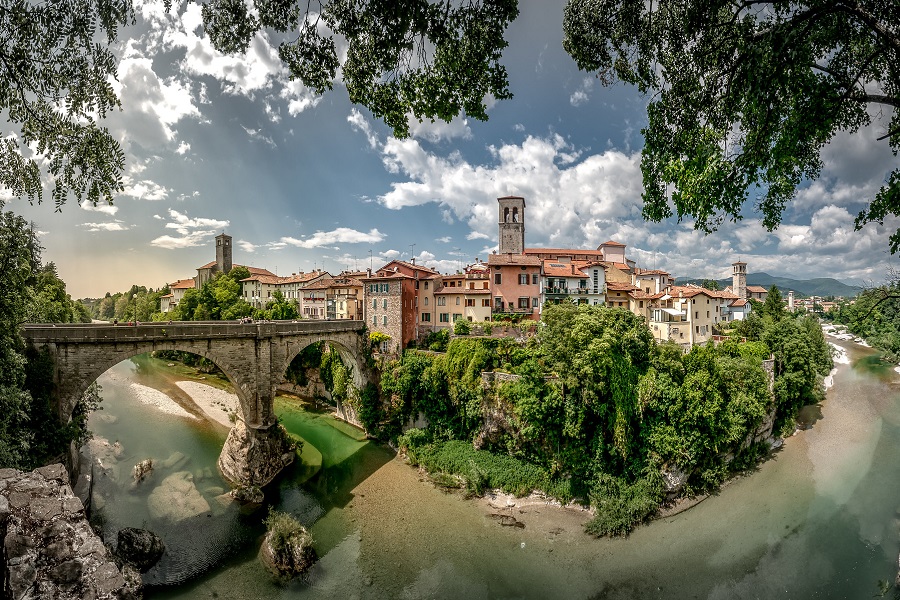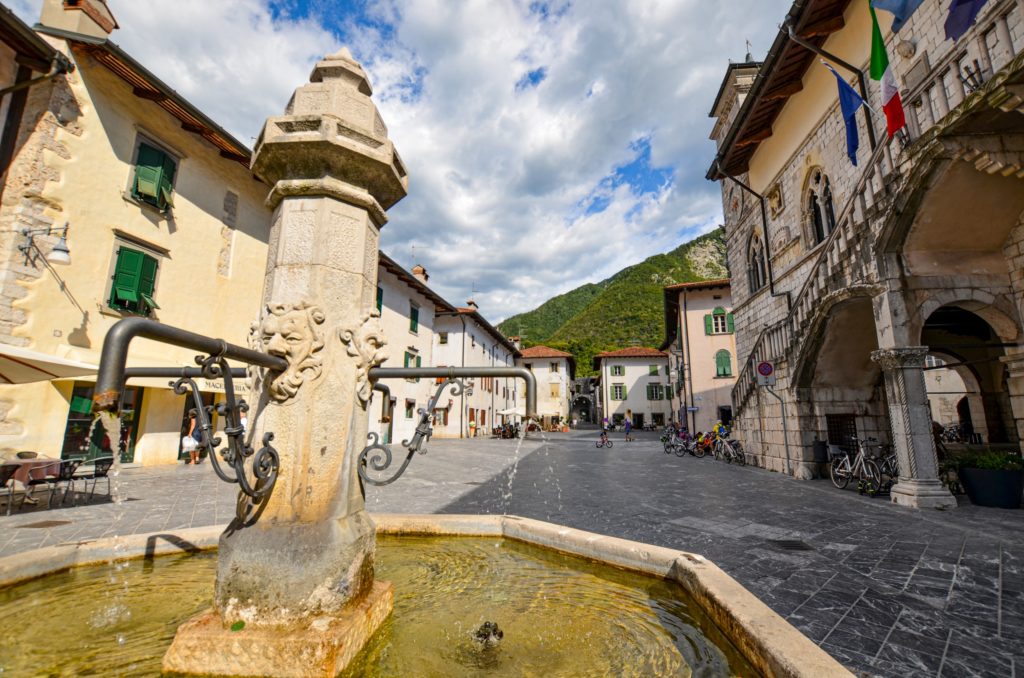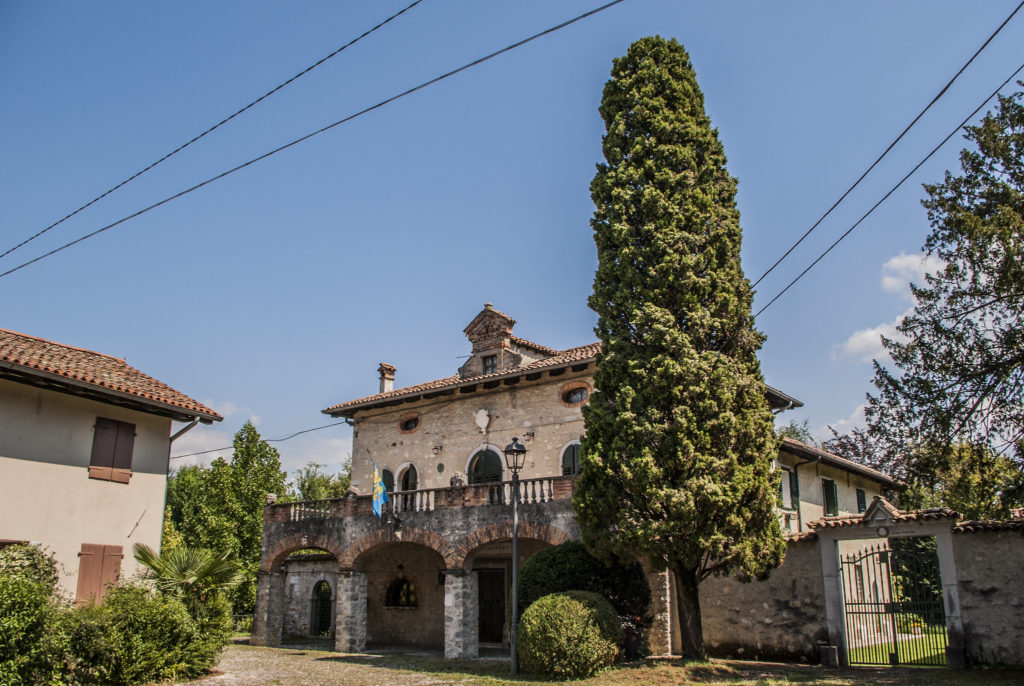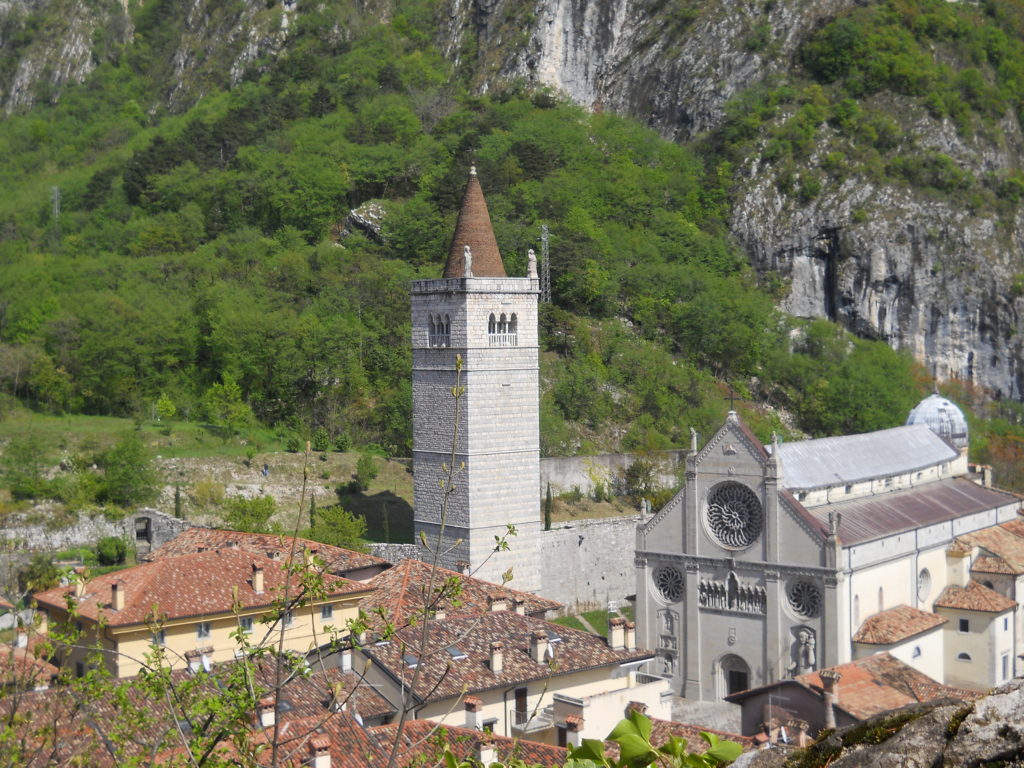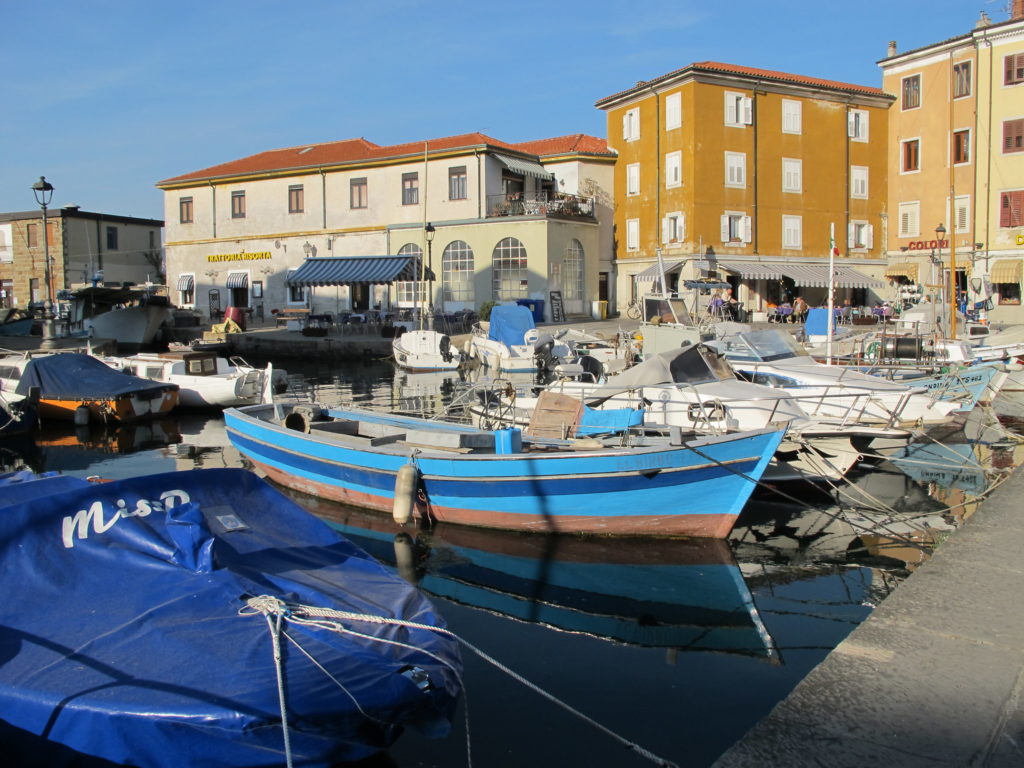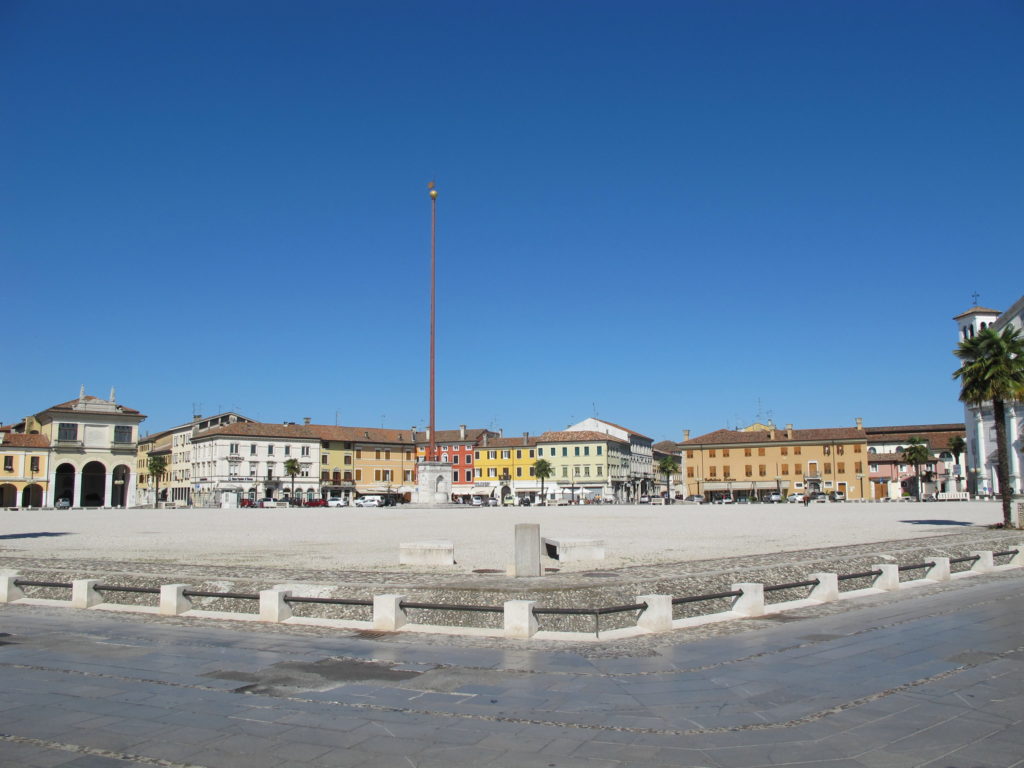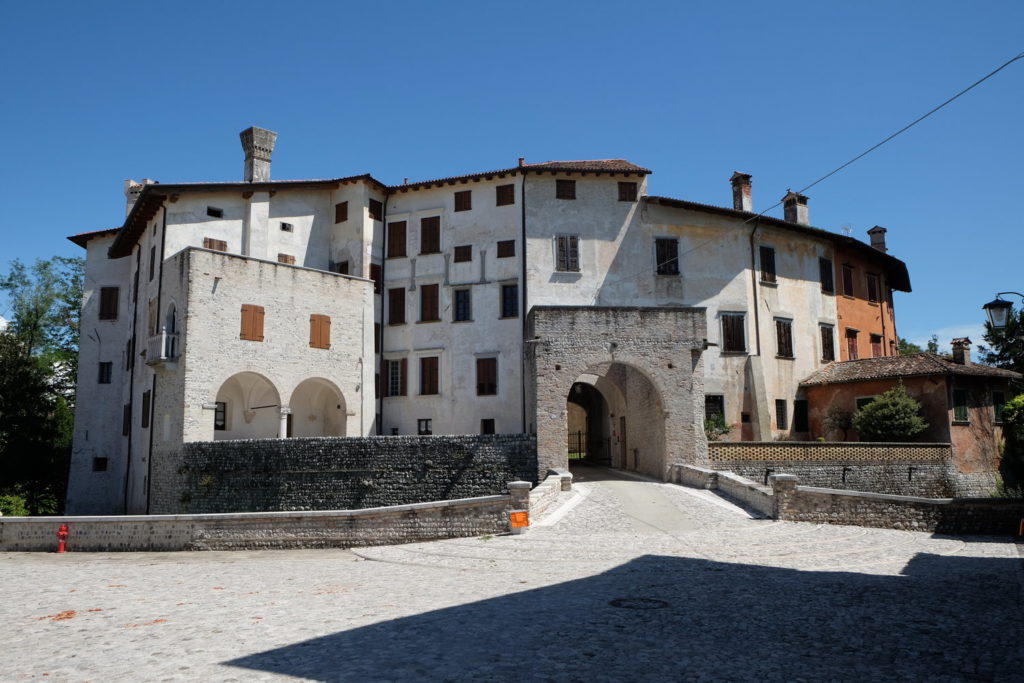The small towns and villages of Friuli-Venezia Giulia offer a diverse range of insights into the heritage and country life of this pretty northern Italian region.
Wedged between the Alps and the Adriatic Sea, Friuli-Venezia Giulia is an oft-overlooked region in the north-eastern corner of Italy. It spans mountainous and maritime regions, where Roman roots and Langobard heritage meld with Austrian and Venetian influences. Friuli prides itself on a strong rural identity epitomised by its own language, while Venezia Giulia revolves around the port city of Trieste, watched over by the Carso plateau. It all amounts to a diversity of villages and small towns spread across the region, from once-great cities that have fallen into decline by the whims of history, to remote settlements still tuned to the slow pace of pastoral life. Some of them were devastated by the deadly 1976 Friuli earthquake, but rose again to become leading examples of post-disaster reconstruction.
Venzone
Located at the meeting point of two valleys, Venzone is an archaic fortified town encircled by walls. The 1976 earthquake hit hard here, but the impressive reconstruction work which followed faithfully restored the town’s layout and historic buildings. The 13th-century duomo is perhaps the best example of such a stone-by-stone effort. In 1647, the ‘Hunchback’ was the first of many naturally mummified bodies to be discovered in and around the town. Today they’re known as ‘the mummies of Venzone’ and displayed at San Michele Chapel. A pumpkin festival held every year in October celebrates local folklore and traditions.
Strassoldo
Divided into a higher and a lower castle, this small hamlet takes its name from an ancient noble family. The complex has been repeatedly damaged over history, as shown by its medieval sections sitting next to later restorations. The tower is one of the main features of the higher castle, still belonging to the Strassoldo family many centuries after their ancestors had it built. As such, it opens to visitors only occasionally, although the lower castle is more easily accessible. The greenery of an ancient park, cut through by waterways, enriches the village and the surrounding landscape.
Sesto al Reghena
A Benedictine abbey has been at the core of this town for over a thousand years. Originally built around 735, the abbey was later turned into a fortified complex used both for religious and defensive purposes. This medieval citadel is today the town’s main attraction, formed by a belltower, a frescoed church, two historic buildings, and a tower which used to be part of the town walls. Not far from there is a graceful Italian garden, first created in the early 20th century to reflect the Renaissance ideals of harmony and proportion. Venetian villas and small votive churches are scattered across the surrounding territory.
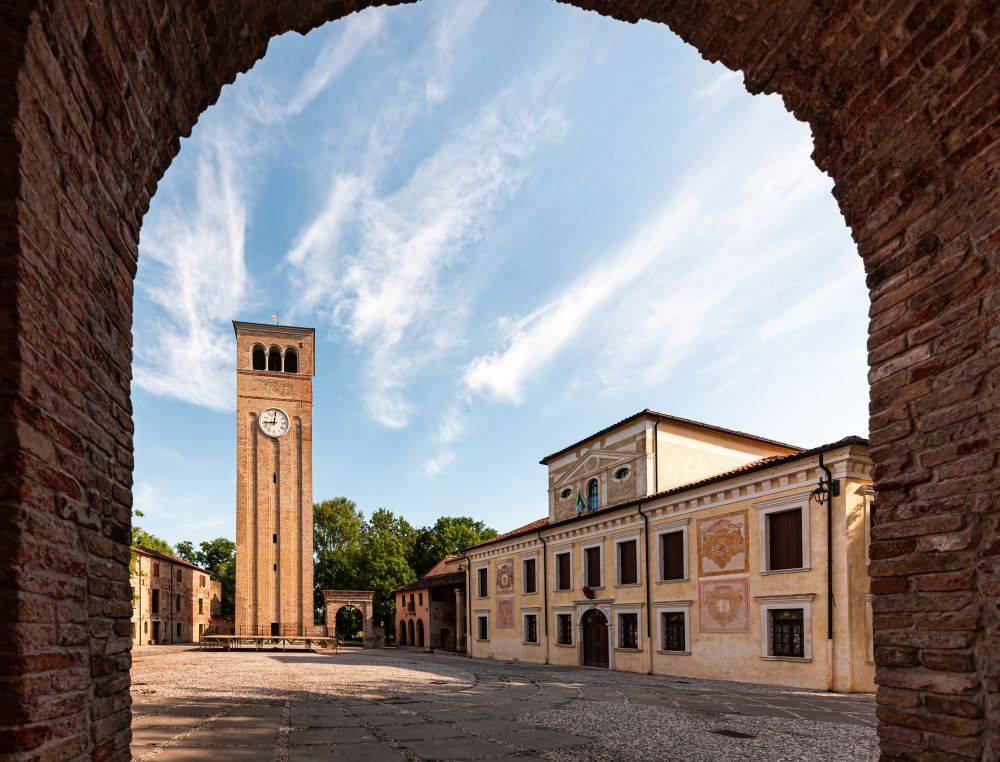
Town hall and belltower in Sesto al Reghena (Photo: Marialuisa Pagliani per Borghiclic, courtesy of Associazione Pro Sesto)
Gemona del Friuli
Watched over by its Langobard castle, Gemona was briefly an important trade centre, between the 13th and the 14th centuries. The duomo is among the region’s most notable churches, blending Gothic and Romanic elements with remarkable works of art such as the seven-metre-high statue of Saint Christoporus. 15th-century goldworking is one of the highlights at the adjoining museum, as well as a baptismal register claimed to be the oldest known in the world (1379). Peculiar three-part windows draw the attention to Casa Giussatti, while more architectural treasures line the nearby Via Bini. A ruined church is a reminder of the 1976 earthquake, which destroyed as much as seventy per cent of the town.
Muggia
Best-known for its vibrant carnival, Muggia is the region’s only outpost on the Istrian coast. Venetian-style alleys snake through the old town leading to the marina, where the picturesque harbour plays a fitting backdrop to the local fish restaurants. The architectural highlights include the hilltop castle and the duomo, the latter featuring a peculiar gothic facade dating back to the 15th century. A short walk uphill, the basilica of Santa Maria Assunta is the only remaining part of the original town, today an archaeological park offering prime views of the Trieste Gulf. Sunsets are quite special here, as this is one of the few Italian locations looking west over the Adriatic Sea.
Tramonti di Sotto
Those looking to soak up the atmosphere of ancient pastoral life shouldn’t miss a visit to Tramonti di Sotto. This remote village is surrounded by the pristine nature of the Tramontina Valley, rich in waterways and dotted with rural settlements. The Campona watermill points the way to Tamar and Palcoda, two ghost burghs forming part of a regional ecomuseum. Lake Radona is just as evocative, with a group of derelict houses sticking out of the water when the level is low. The local artistic heritage includes the 16th-century frescoes of Santa Maria Maggiore church.
Fagagna
An elegant belltower is first spotted when approaching Fagagna. It was once part of a hilltop castle, today in ruins, cited in historical documents as early as the tenth century. Storks fly overhead as one wanders through the town’s old boroughs, and a visit to the the Oasi dei Quadris nature reserve reveals where they’re likely coming from. The Cjase Cocèl museum offers a vivid and thorough recreation of rural life, while the Villalta Castle is worth the short trip out of town. A traditional donkey ride is held every September, as well as food festivals and folkloric contests between the boroughs.
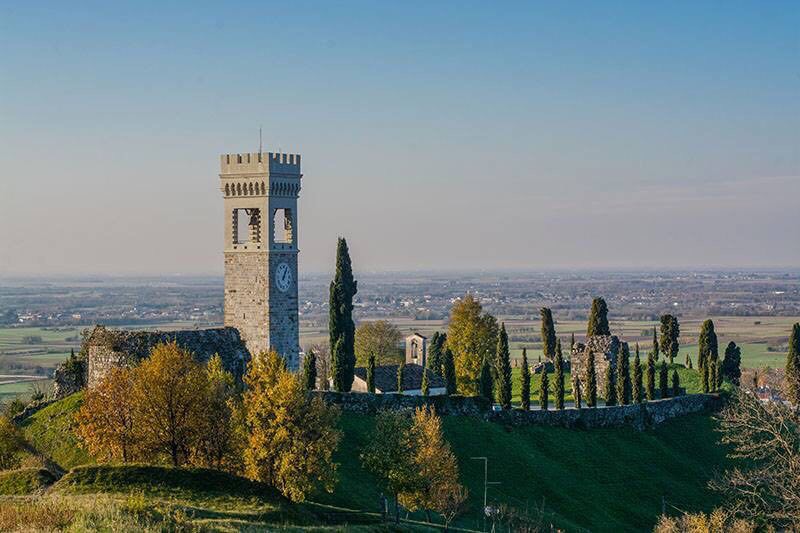
Fagagna and the surrounding countryside (Photo: Luciano Ghersi for Borghiclic, courtesy of Ufficio Turistico Fagagna)
Cividale del Friuli
Straddling the Natisone River with its wide arches, the Devil’s Bridge makes quite a spectacular entryway to Cividale del Friuli. Legend has it that the locals sought help from the devil to tame the unruly waters and build the bridge, but then tricked him when it came to holding up their part of the deal. Luckily, no curse fell on the town, at least judging by the many treasures which have piled up in it throughout history. Some of the most striking examples include the early-medieval art stored at the duomo, the grand frescoes at Palazzo Pontotti-Brosadola, and the small temple representative of a strong Langobard heritage. A Celtic hypogeum (underground tomb) can be found near the river.
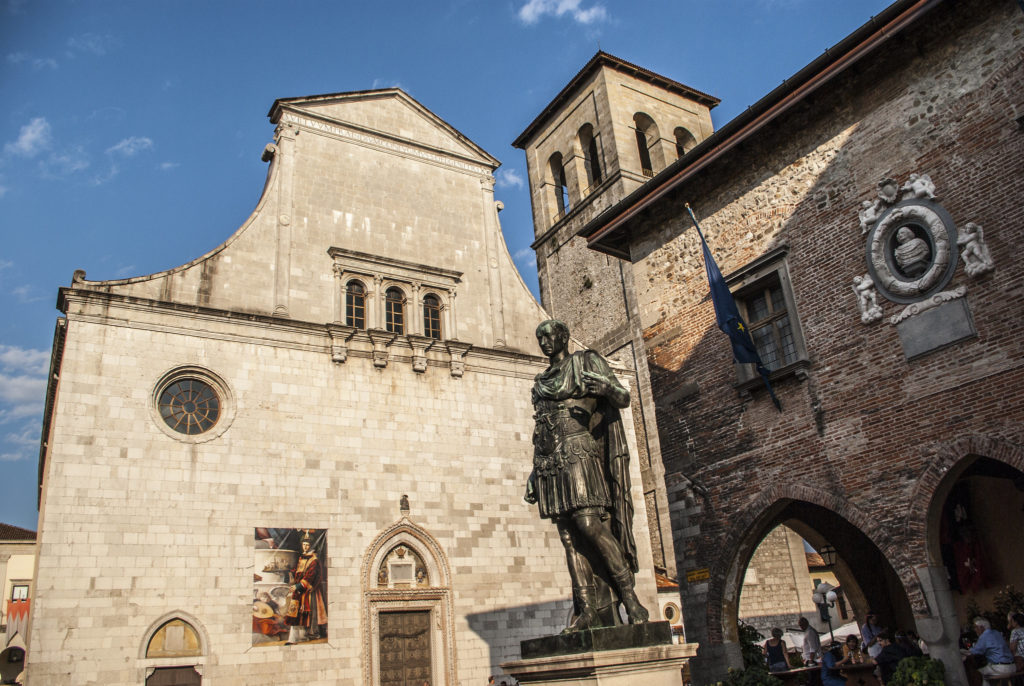
The duomo overlooks a statue of Cividale’s founder, Julius Caesar (Photo: Stefano Merli via Flickr / CC BY-SA 2.0)
Palmanova
Also known as the ‘star-shaped city’, Palmanova expresses late-Renaissance ideals in the form of a fortress-town. The Venetians built it for strategic reasons at the turn of the 17th century, a time when both the Ottomans and the Hapsburgs posed a recurring threat to the republic. Later enhanced by Napoleon, the complex system of fortifications can be explored by walking along the town’s perimeter, as well as by visiting the military museum located next to one of the old gates. The duomo overlooking Piazza Grande is one of the highest examples of Venetian architecture in Friuli, while the hexagonal square is the perfect starting point for a walk through the town.
Polcenigo
The many waterways flowing near Polcenigo create natural sceneries which blend in seamlessly with the picturesque rural hamlets. The Venetian villa on top of the hill was built over a derelict castle and itself has fallen into a semi-abandoned state, but still attracts visitors with its eerie and romantic air. Further north is the idyllic scenery of the Gorgazzo spring, while a rural park and an archaeological site provide more natural attractions. The latter was made famous by a prehistoric pile-dwelling village discovered in the 1960s, the earliest-known human settlement in this area. Basket making is the local craft, celebrated every year at the beginning of September.
Aquileia
Founded in 181 BC as a military outpost, Aquileia rapidly became the most important Roman city in north-eastern Italy. It also became known as a major hub of early Christianity, before Attila the Hun razed it to the ground in 452. Today, many archaeological treasures bear testimony to the town’s heyday, such as the extraordinary mosaic floors adorning the basilica, baptistery and episcopal palace. The Roman heritage includes the fluvial port and the first-century forum, alongside which visitors can still see the original decumano road.
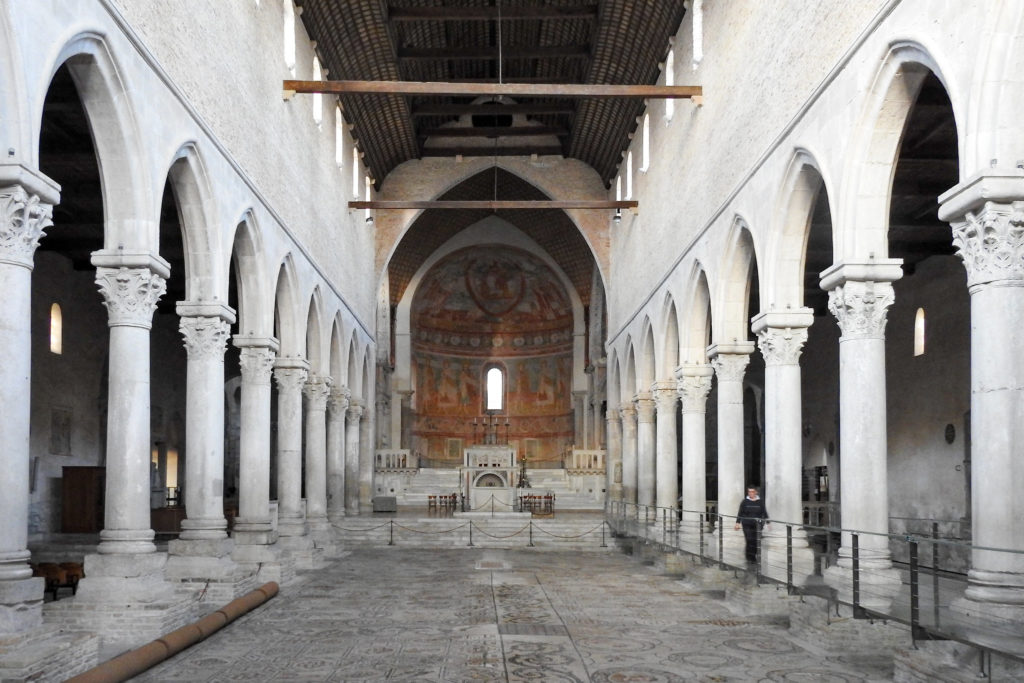
Aquileia is one of the main archaeological sites in northern Italy (Photo: xiquinhosilva via Flickr / CC BY 2.0)
Valvasone Arzene
The three-day festival held every year in September might be the best time to delve into the medieval roots of Valvasone. But even when not dressed in folkloric attire, the town’s porticoes and cobbled streets create an atmosphere which vividly evokes times gone by. A host of historic buildings display Renaissance influences as well as later styles, while the duomo’s organ ranks high in the artistic heritage of Friuli-Venezia Giulia. A visit to the castle includes 14th-century frescoes, an elegant Gothic hall, and a most curious theatre, said to be the smallest in Italy.
